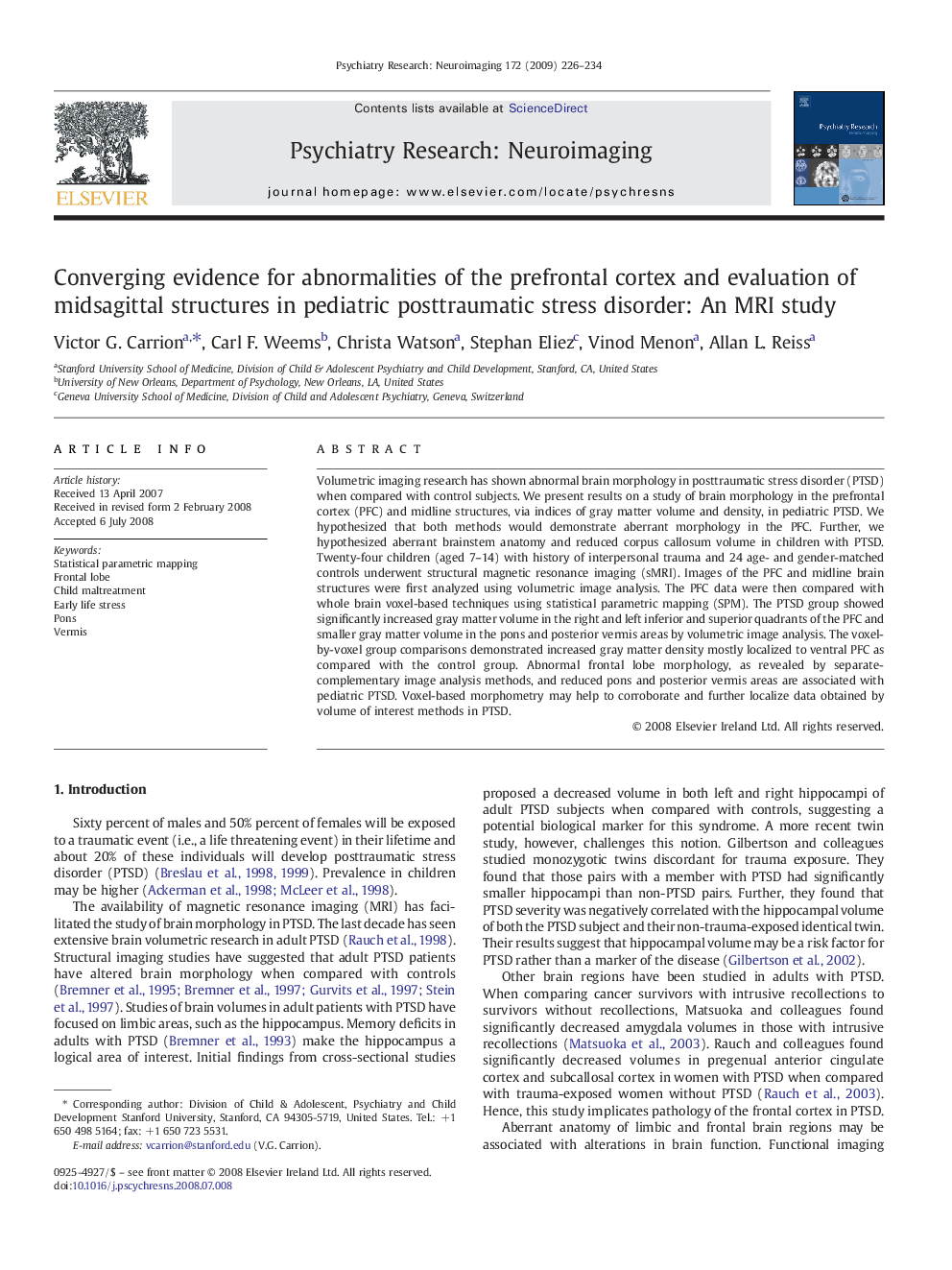| Article ID | Journal | Published Year | Pages | File Type |
|---|---|---|---|---|
| 335169 | Psychiatry Research: Neuroimaging | 2009 | 9 Pages |
Volumetric imaging research has shown abnormal brain morphology in posttraumatic stress disorder (PTSD) when compared with control subjects. We present results on a study of brain morphology in the prefrontal cortex (PFC) and midline structures, via indices of gray matter volume and density, in pediatric PTSD. We hypothesized that both methods would demonstrate aberrant morphology in the PFC. Further, we hypothesized aberrant brainstem anatomy and reduced corpus callosum volume in children with PTSD. Twenty-four children (aged 7–14) with history of interpersonal trauma and 24 age- and gender-matched controls underwent structural magnetic resonance imaging (sMRI). Images of the PFC and midline brain structures were first analyzed using volumetric image analysis. The PFC data were then compared with whole brain voxel-based techniques using statistical parametric mapping (SPM). The PTSD group showed significantly increased gray matter volume in the right and left inferior and superior quadrants of the PFC and smaller gray matter volume in the pons and posterior vermis areas by volumetric image analysis. The voxel-by-voxel group comparisons demonstrated increased gray matter density mostly localized to ventral PFC as compared with the control group. Abnormal frontal lobe morphology, as revealed by separate-complementary image analysis methods, and reduced pons and posterior vermis areas are associated with pediatric PTSD. Voxel-based morphometry may help to corroborate and further localize data obtained by volume of interest methods in PTSD.
